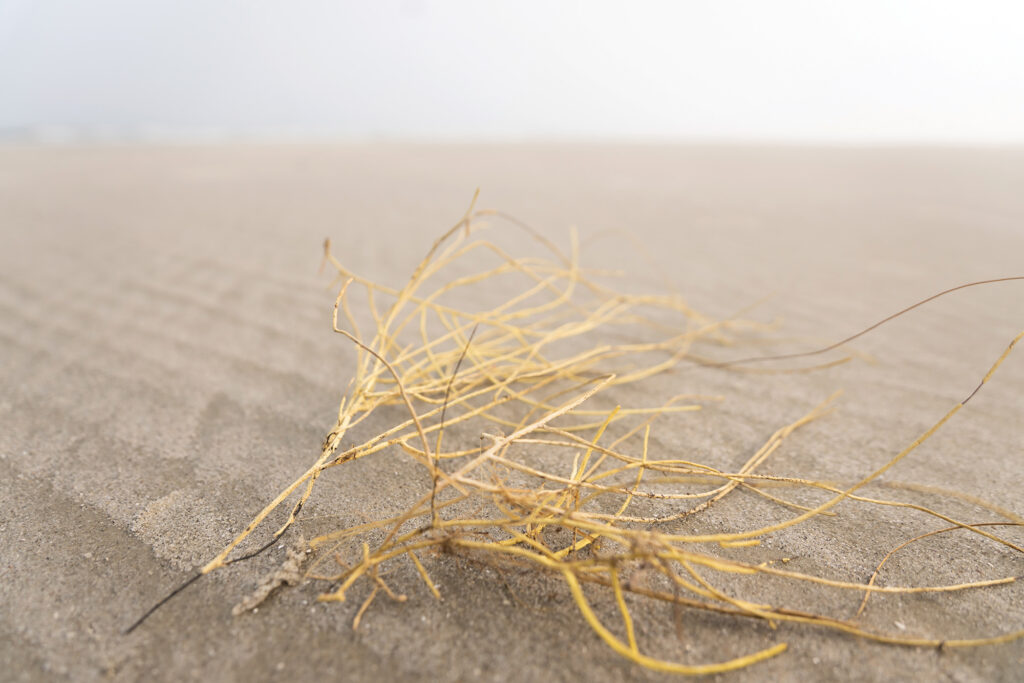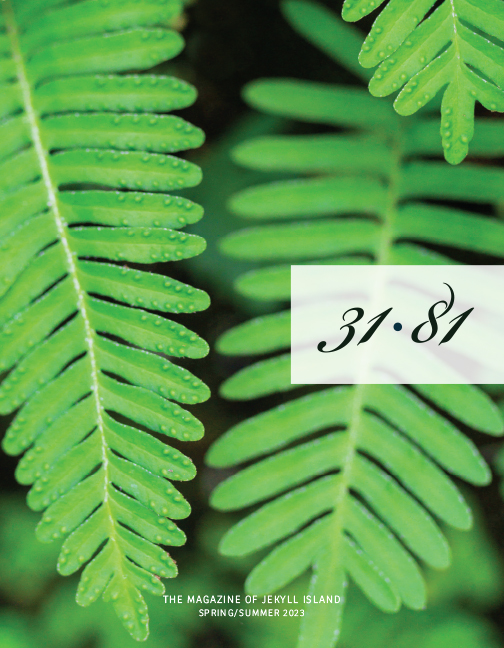Mesmerizing coral forms a teeming underwater colony
BY TESS MALONE
Jekyll Island beachcombers often find tangles of what, at first glance, appear to be strands of rope washed up on the shore. A closer inspection, though, reveals that it’s not marine debris or water-logged plants, but one-time living animals with rainbow-colored “branches.” It’s sea whip coral, a nearshore cold-water coral species found up and down the mid-Atlantic coast. Scuba divers around Jekyll can spot sea whips on pilings in shallow coastal water, marked by fuschia, ruby, golden, violet, and creamsicle-colored fronds.
This flexible coral latches onto just about any underwater hard surface, natural or manmade, from rock outcrops and shells to shipwrecks. A large colony of polyps makes up the cylindrical “branches” that are attached to the sea whip’s skeleton. Eight tentacles, used for feeding, spring from each polyp. Sea whips are suspension feeders, using those swaying branches to suck up plankton as it floats nearby.
Divers can expect quite a show from the colonies of sea whips. Thanks to their flexible skeleton, the soft coral’s boldly hued bodies sway with the ocean currents. The sea whip coral’s “branches” can grow to three feet long, offering camouflage and concealment to all sorts of critters like crabs, shrimp, and some fish.
Sea whips can live up to 15 years, but their average lifespan is just six—and sometimes less in hostile environments. Like all coral, fishing traps and lines are a constant danger, pulling them away from their moorings and washing them onto shores. They have natural predators, too, including sea slugs and a type of striped puffer fish called a burrfish.
Fortunately, sea whips are not an endangered species, at least not yet, says Yank Moore, the Jekyll Island Authority’s Director of Conservation. “They are vulnerable, as are most coral species,” he says, “but they do not have any official [endangered] listing.”


